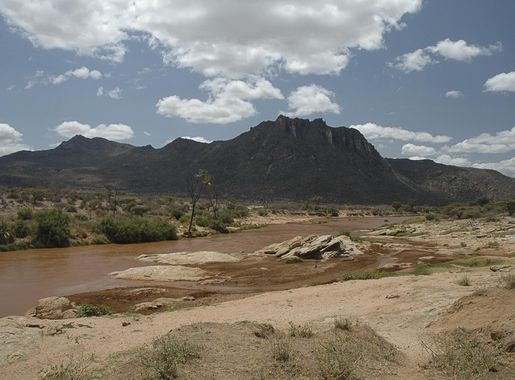
Shaba National Reserve: A Hidden Gem in the Heart of Kenya
Discover Shaba National Reserve, Kenya's hidden gem, where rugged landscapes, diverse wildlife, and rich cultural heritage await adventurous travelers.
Shaba National Reserve is a true hidden gem in Kenya. Located in the northern part of the country, it offers a unique and peaceful experience away from the more crowded parks. The reserve is known for its rugged beauty, with dramatic landscapes ranging from rocky hills to lush green valleys. One of the main attractions of Shaba is its diverse wildlife. Visitors can expect to see a variety of animals, including elephants, lions, and the rare Grevy's zebra. The reserve is also a birdwatcher's paradise, with over 200 species of birds, including the endangered lesser kestrel and the rare Somali ostrich. Shaba's stunning scenery is complemented by its rich cultural heritage. The reserve is named after Mount Shaba, a volcanic mountain that offers breathtaking views of the surrounding area. The local Samburu people, who have lived in the region for centuries, add to the cultural richness with their traditional customs and vibrant way of life. Visitors can engage with the Samburu community and learn about their unique traditions and lifestyle.
Local tips in Shaba National Reserve
- Visit during the dry season (June to October) for the best wildlife viewing opportunities.
- Hire a local guide to enhance your experience and gain deeper insights into the reserve's ecosystem and culture.
- Carry sufficient water and sun protection, as temperatures can soar during the day.
- Don't miss the chance to interact with the Samburu people and learn about their unique traditions.
Shaba National Reserve: A Hidden Gem in the Heart of Kenya
Shaba National Reserve is a true hidden gem in Kenya. Located in the northern part of the country, it offers a unique and peaceful experience away from the more crowded parks. The reserve is known for its rugged beauty, with dramatic landscapes ranging from rocky hills to lush green valleys. One of the main attractions of Shaba is its diverse wildlife. Visitors can expect to see a variety of animals, including elephants, lions, and the rare Grevy's zebra. The reserve is also a birdwatcher's paradise, with over 200 species of birds, including the endangered lesser kestrel and the rare Somali ostrich. Shaba's stunning scenery is complemented by its rich cultural heritage. The reserve is named after Mount Shaba, a volcanic mountain that offers breathtaking views of the surrounding area. The local Samburu people, who have lived in the region for centuries, add to the cultural richness with their traditional customs and vibrant way of life. Visitors can engage with the Samburu community and learn about their unique traditions and lifestyle.
When is the best time to go to Shaba National Reserve?
Iconic landmarks you can’t miss
Sarova Shaba Game Lodge
Discover luxury and adventure at Sarova Shaba Game Lodge in the heart of Kenya's Shaba National Reserve, surrounded by stunning wildlife and breathtaking landscapes.
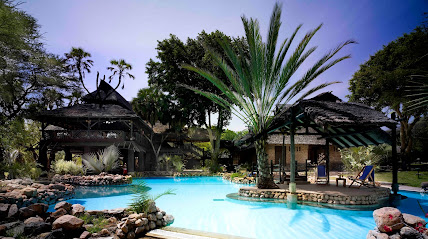
Shimba Hills National Reserve
Explore the stunning Shimba Hills National Reserve, a treasure trove of wildlife and breathtaking landscapes in the heart of Kenya.

Buffalo Springs National Reserve
Explore the breathtaking beauty of Buffalo Springs National Reserve, where wildlife roams free amidst stunning landscapes in the heart of Kenya.
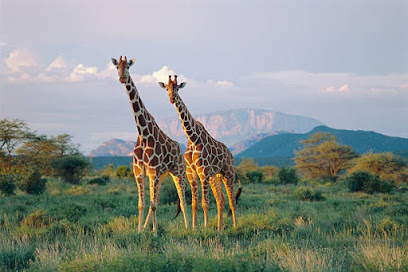
Samburu National Reserve
Discover the unique wildlife and breathtaking landscapes of Samburu National Reserve, an unforgettable safari experience in Kenya's wilderness.
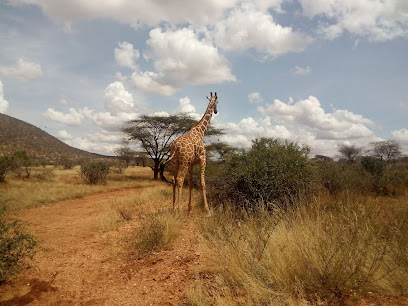
Samburu Sopa Lodge
Immerse yourself in the wilderness at Samburu Sopa Lodge – a perfect blend of luxury and nature in the heart of Samburu National Park.

Elephant Watch Camp
Discover the beauty of Samburu at Elephant Watch Camp, a perfect blend of luxury, conservation, and unforgettable wildlife experiences.

Samburu Intrepids
Explore the exquisite Samburu National Reserve from the luxurious Samburu Intrepids, where comfort meets adventure in the heart of Kenya.
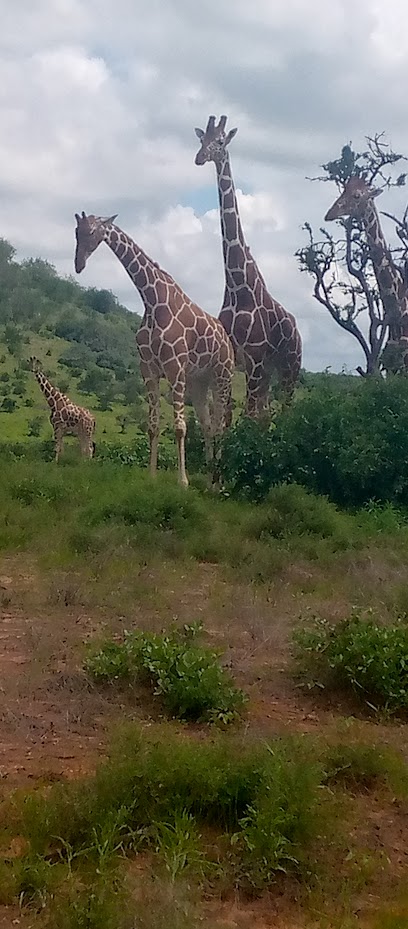
Samburu National Park
Discover Samburu National Park, where Kenya's unique wildlife and rich culture come together in a breathtaking natural setting.
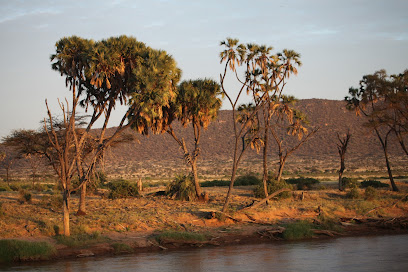
Unmissable attractions to see
Buffalo Springs National Reserve
Discover the breathtaking wildlife and scenic landscapes of Buffalo Springs National Reserve, a hidden gem in the heart of Kenya's wilderness.
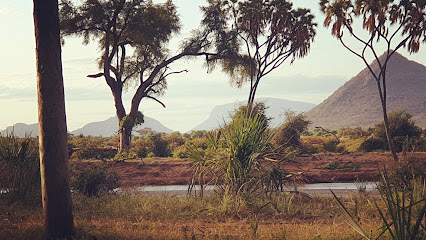
Meru National Park
Discover the wild charm of Meru National Park, a serene haven for wildlife enthusiasts amidst stunning landscapes in the heart of Kenya.
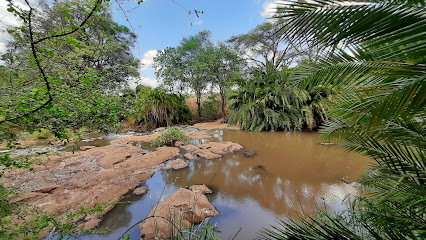
Kalama Community Conservancy
Discover the enchanting landscapes and rich biodiversity of Kalama Community Conservancy, a true gem of Kenya's nature preserves.

Lions Cave Camp
Discover the serene beauty of Lions Cave Camp in Archers Post, Kenya, where nature meets comfort in a perfect getaway.
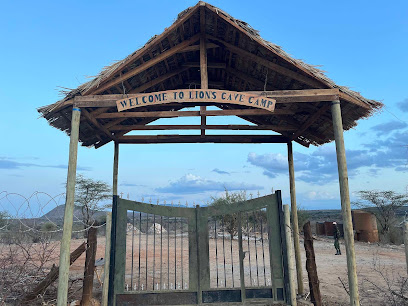
Mt. Ololokwe
Explore the stunning vistas and rich biodiversity of Mt. Ololokwe, a must-visit destination for nature lovers in Kenya.
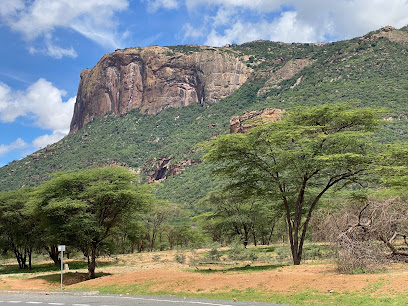
Nyambene Hills Peak
Explore the stunning vistas of Nyambene Hills Peak, a top destination for nature lovers and adventure seekers in Kenya.
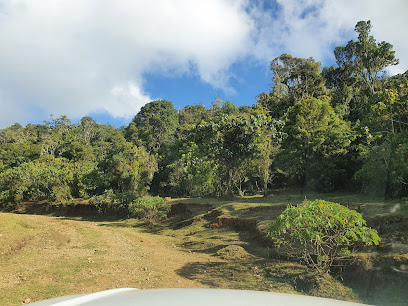
Samburu National Reserve
Explore the breathtaking Samburu National Reserve, home to unique wildlife and stunning landscapes, offering an unforgettable safari adventure in Kenya.
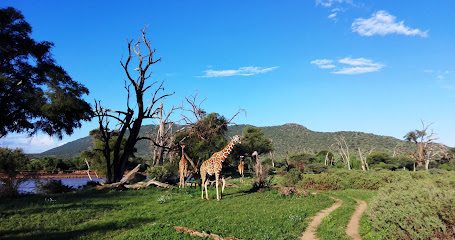
Save the Elephants Research Camp
Explore wildlife conservation at Save the Elephants Research Camp in Kenya, where adventure meets learning in the heart of the African savannah.

Samburu National Reserve Gate
Experience the enchanting wildlife and stunning landscapes of Samburu National Reserve, a true gem in the heart of Kenya's wilderness.

Magado Crater
Explore the breathtaking landscapes and rich biodiversity of Magado Crater, a hidden gem in Kenya's nature preserves.
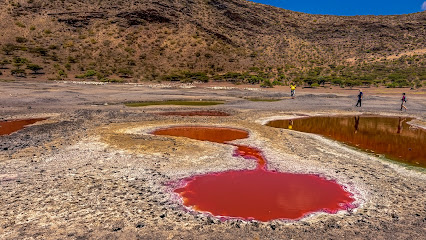
Ololokwe Village Investment
Experience the authentic culture and breathtaking landscapes at Ololokwe Village Investment, a unique gem in Kenya's Archers Post.

Samburu Intrepids
Discover the wild elegance of Samburu Intrepids, a luxury tented camp in Kenya's Samburu National Reserve, where adventure meets comfort in nature's embrace.
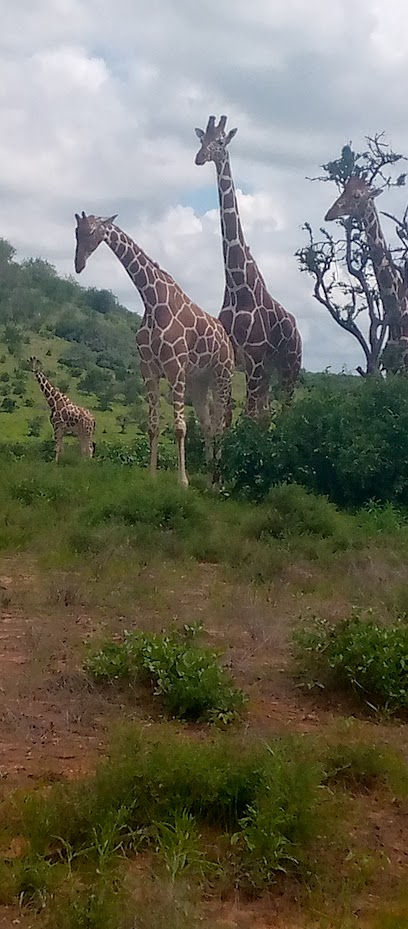
Namunyak Wildlife Conservancy
Experience the breathtaking landscapes and diverse wildlife of Namunyak Wildlife Conservancy, a true gem of Kenya's nature preserves.
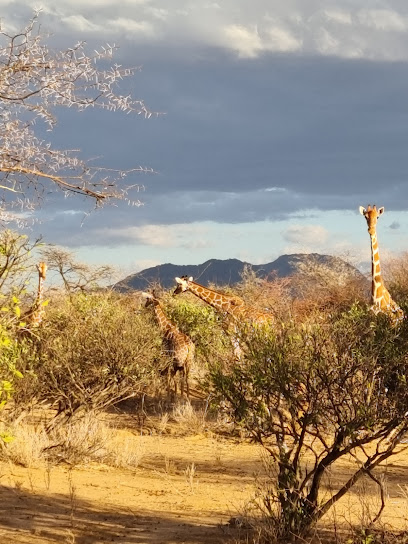
Lion King Safari Bush Camp
Discover the wonders of wildlife and nature at Lion King Safari Bush Camp in Losai National Reserve, Kenya, a paradise for adventure seekers and nature lovers.

Samburu
Explore Samburu, Kenya's breathtaking tourist attraction brimming with wildlife, rich culture, and stunning landscapes for an unforgettable adventure.

Essential places to dine
Mawimbi Seafood Restaurant
Discover the finest seafood dining experience at Mawimbi Seafood Restaurant in Nairobi – where every dish tells a story.
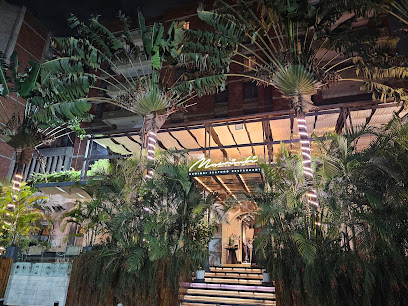
Open House Restaurant Ltd
Experience authentic Indian flavors at Open House Restaurant Ltd in Nairobi – where every dish tells a story.
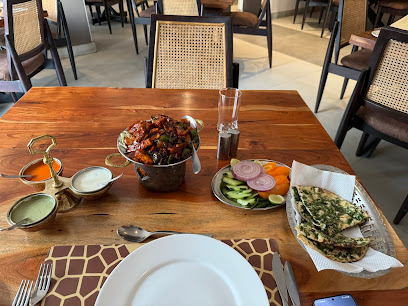
Sarova Shaba Game Lodge
Discover luxury and adventure at Sarova Shaba Game Lodge in Kenya's stunning Shaba National Reserve.
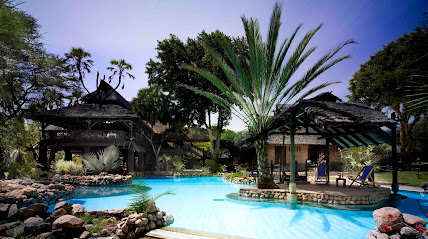
Trout Tree Restaurant
Discover exquisite dining at Trout Tree Restaurant in Nanyuki—where fresh trout meets serene riverside views.
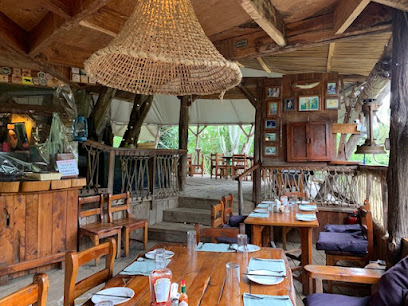
Haandi Restaurant
Experience authentic Indian cuisine at Haandi Restaurant in Nairobi – where every dish tells a story of tradition and flavor.
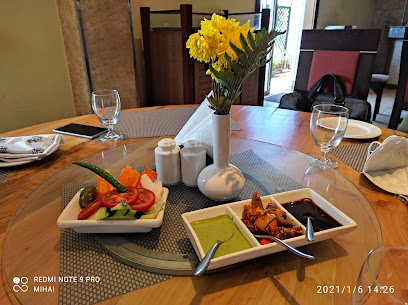
Barney's Bar and Restaurant
Discover Barney's Bar and Restaurant: A culinary delight nestled in Nanyuki's stunning landscapes offering local dishes and refreshing drinks.
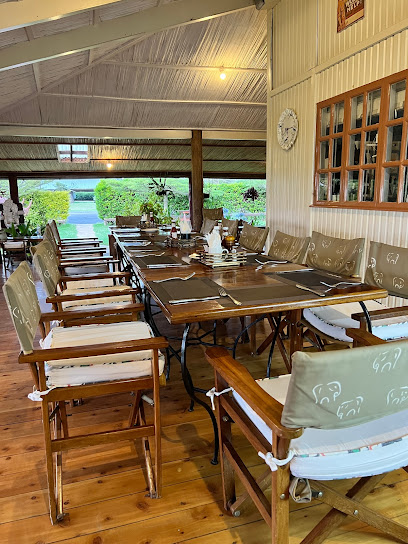
Rift Valley Spur Steak Ranch
Discover Rift Valley Spur Steak Ranch: A family-friendly haven for steak lovers offering delectable African dishes in Naivasha.
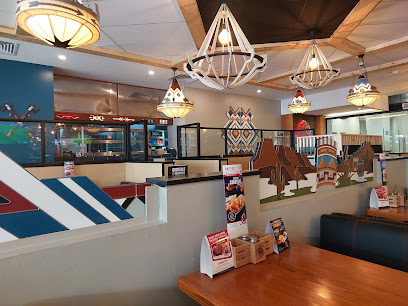
Buffalo Springs National Reserve
Discover Buffalo Springs National Reserve: A breathtaking Kenyan wilderness teeming with diverse wildlife and stunning landscapes perfect for your safari adventure.
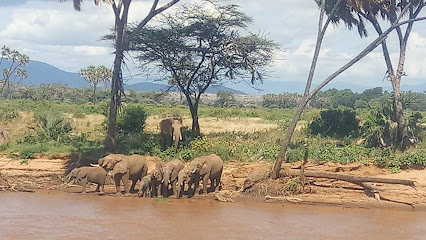
Ranch House Bistro
Experience the essence of Kenyan cuisine at Ranch House Bistro in Kongoni - a culinary gem surrounded by breathtaking landscapes.
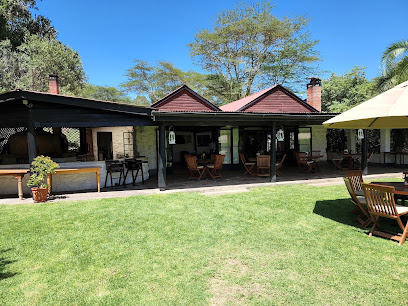
Samburu National Reserve
Explore Samburu National Reserve: A Wildlife Haven Rich in Culture and Stunning Landscapes
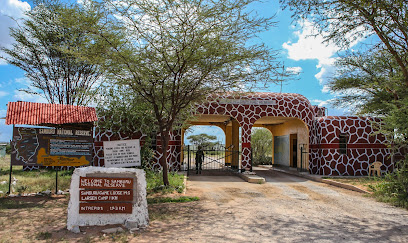
Anghiti Restaurant
Discover the rich flavors of India at Anghiti Restaurant in Nairobi - where authentic cuisine meets warm hospitality.
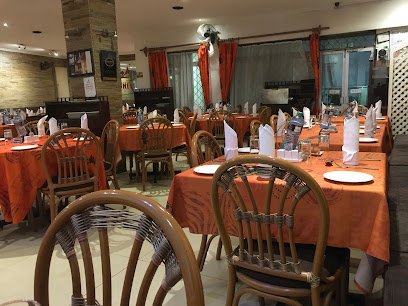
Iman Restaurant
Experience the rich flavors of Halal cuisine at Iman Restaurant in Isiolo – your perfect dining stop along the highway.

Jiko Restaurant At Tribe Hotel
Discover the vibrant fusion of local and international cuisines at Jiko Restaurant within Tribe Hotel - A must-visit culinary destination in Nairobi.
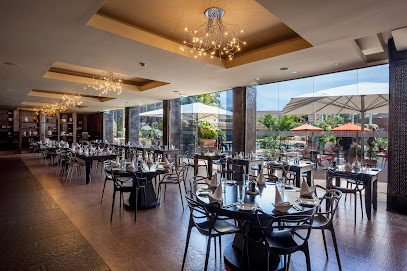
Shaba National Reserve
Explore Shaba National Reserve: A stunning Kenyan nature preserve teeming with diverse wildlife and breathtaking landscapes.
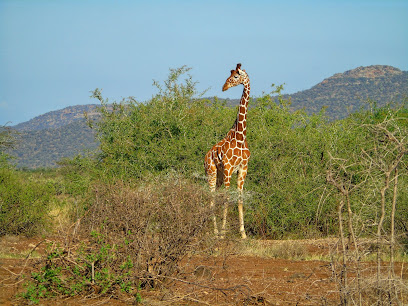
Ashnil Samburu Camp
Discover unparalleled wildlife experiences and luxurious comfort at Ashnil Samburu Camp, your gateway to Kenya's stunning landscapes.

Markets, malls and hidden boutiques
Sarova Shaba Game Lodge
Experience the ultimate safari adventure at Sarova Shaba Game Lodge, where luxury meets the wild in the heart of Samburu National Reserve.

Shaba National Reserve
Experience the wild heart of Kenya at Shaba National Reserve, where breathtaking landscapes and diverse wildlife await every adventurer.
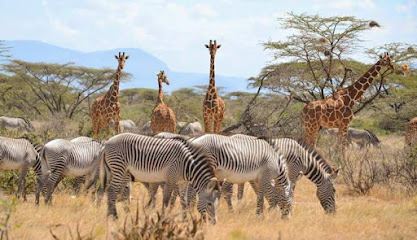
Samburu Sopa Lodge
Discover Samburu Sopa Lodge: A luxurious haven for wildlife lovers amidst breathtaking Kenyan landscapes, perfect for an unforgettable safari experience.

Diamond & Ruby Collection
Discover unique gifts, handcrafted jewelry, and local artistry at the Diamond & Ruby Collection in Meru, a shopper's paradise filled with treasures.
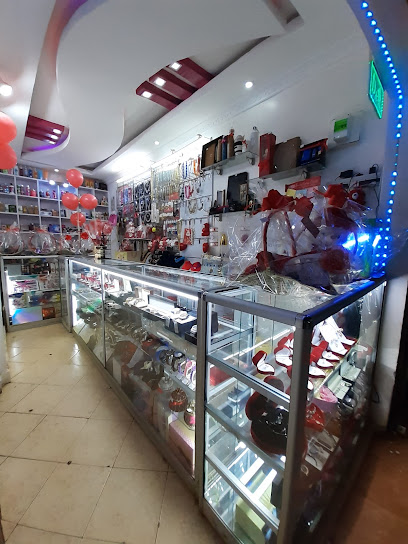
Mulika Market
Explore Mulika Market in Mikinduri for a vibrant shopping experience filled with local culture, delicious foods, and unique handmade crafts.
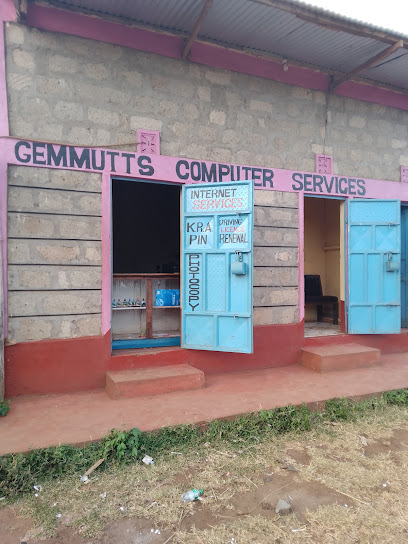
Kabaune Shopping Centre
Explore the lively Kabaune Shopping Centre in Meru, where shopping, dining, and community come together in a vibrant atmosphere.
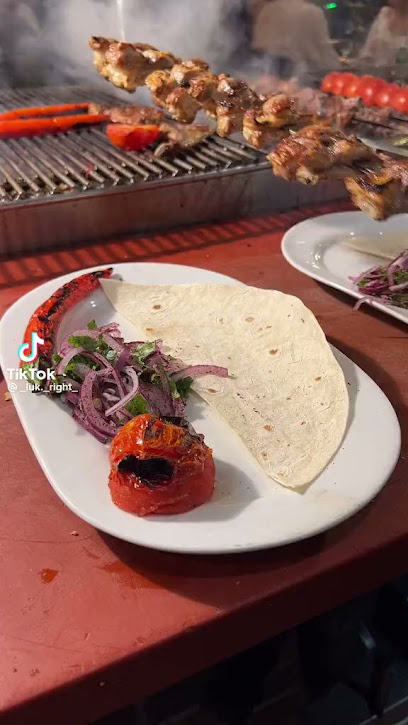
Ndugu Musa Shopping Center
Explore the vibrant Ndugu Musa Shopping Center in Gatunga for a unique blend of local culture, shopping, and delicious Kenyan delicacies.
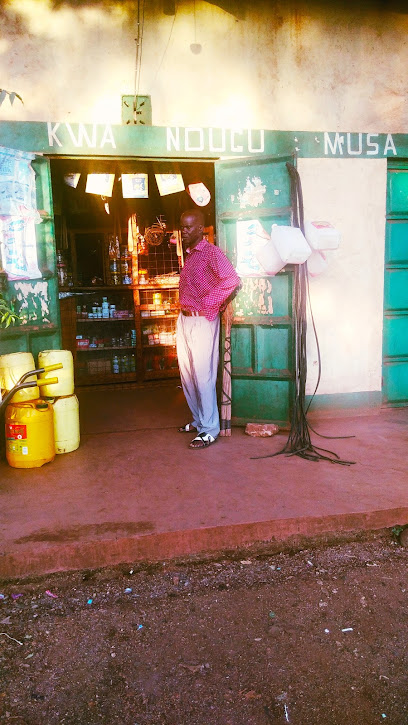
Jamida enterprises
Explore Jamida Enterprises in Mikinduri for unique home goods and local treasures that embody the rich culture and craftsmanship of the region.
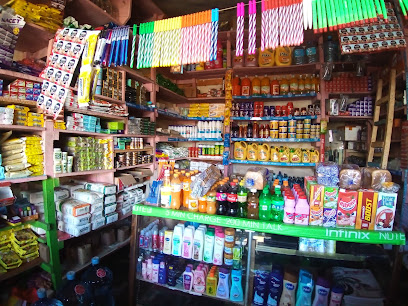
Ciothirai Shopping Center
Explore the vibrant Ciothirai Shopping Center in Mikinduri, where local culture meets diverse shopping experiences.
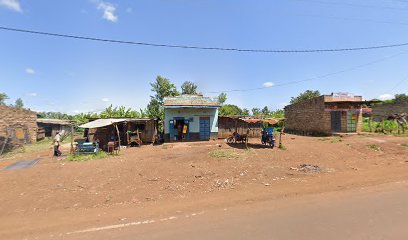
Mutirithia General store
Explore local culture at Mutirithia General Store, a charming destination in Archers Post offering unique goods and community spirit.
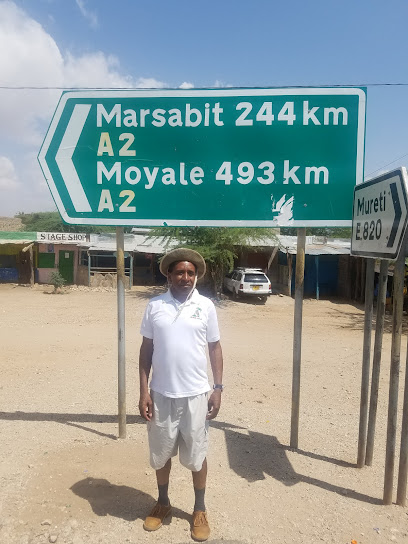
Kambi ya Nyanyua
Explore local treasures at Kambi ya Nyanyua, a charming general store in Mikinduri, Meru, offering unique souvenirs and a taste of local culture.
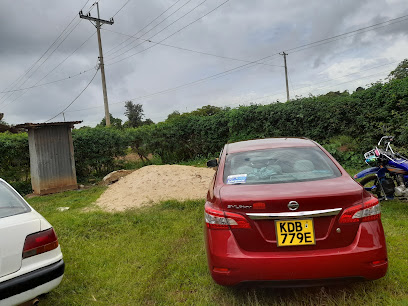
Satellite computers - Kabira
Discover modern and functional computer desks at Satellite Computers in Kabira, a top destination for tech enthusiasts and office upgrades.
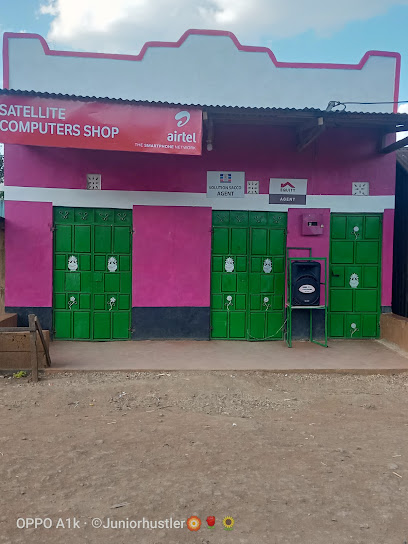
Banja Market
Discover the vibrant Banja Market in Kenya, a shopping paradise brimming with local crafts, fresh produce, and rich cultural experiences.
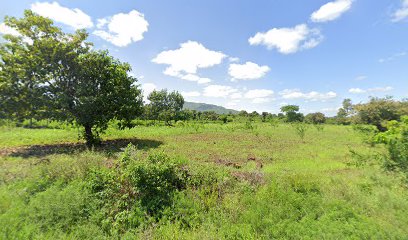
Giithu Kwa Besty Mwangi Store
Explore Giithu Kwa Besty Mwangi Store – your go-to electronics hub in Mikinduri for cutting-edge gadgets and local tech treasures.

Igarii Dispensary
Discover Igarii Dispensary in Kenya: Your trusted pharmacy for health and wellness while traveling.

Essential bars & hidden hideouts
Archers Klub Haus
Discover the lively atmosphere of Archers Klub Haus, where delicious dining meets vibrant nightlife in Archers Post.

Drips Pub
Discover Kianjai's nightlife at Drips Pub, where local charm meets a vibrant atmosphere for an unforgettable evening.
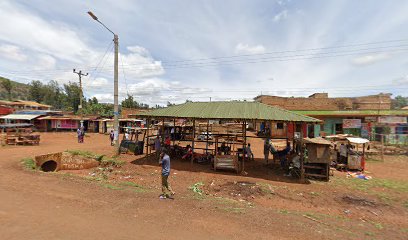
Billy's villa pub
Discover the charm of Kenya at Billy's Villa Pub, where local brews and a friendly atmosphere await every traveler.
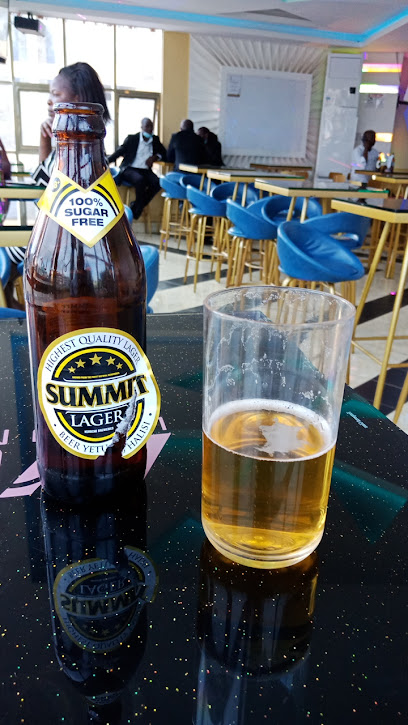
Sundowner Bar and Lodgings
Experience the perfect blend of relaxation and adventure at Sundowner Bar and Lodgings in Archers Post, where nature meets comfort.
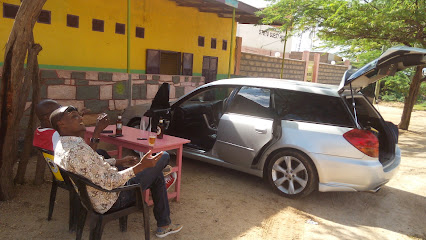
APLSC CANTEEN
Discover APLSC Canteen, a cozy bar in Kenya offering refreshing drinks and a welcoming atmosphere for tourists seeking relaxation.
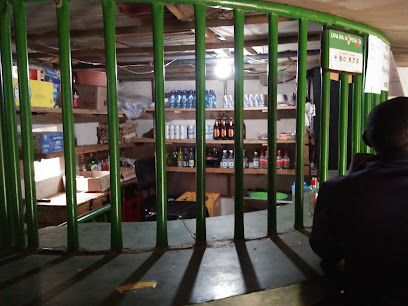
Baariu Munyambo's Bar & Restaurant
Experience the heart of Maibuki at Baariu Munyambo's Bar & Restaurant, where local flavors meet vibrant social vibes.

Maxland Bar
Experience local culture and relaxation at Maxland Bar in Archers Post, a vibrant social hub for tourists and locals alike.
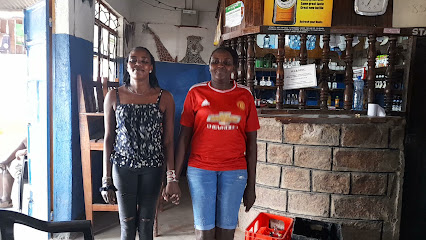
Smiling Panda Valley Pub
Discover the lively Smiling Panda Valley Pub in Muriri, offering a perfect blend of local culture, refreshing drinks, and vibrant nightlife.

Oasis Bar And Lodgings
Immerse yourself in the local scene at Oasis Bar and Lodgings, where vibrant drinks and warm hospitality await in the heart of Archers Post.
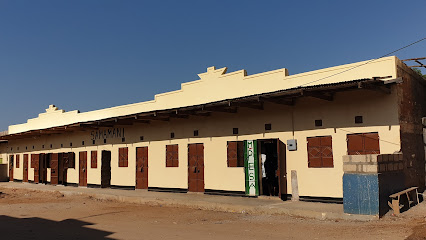
Dance Pub
Discover the vibrant nightlife at Dance Pub, where music, dancing, and an electric atmosphere come together for an unforgettable experience in Kenya.
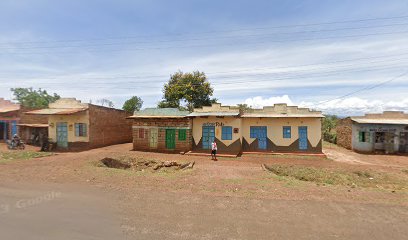
Haneka Bar
Discover the lively charm of Haneka Bar on Muriri-Miciimikuru Rd, a perfect blend of local culture and vibrant nightlife.
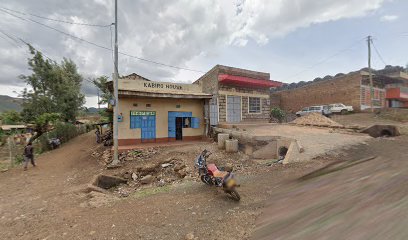
Thabariu bar
Experience the vibrant flavors of Kenya at Thabariu Bar, a premier grill and bar offering delicious local dishes and refreshing drinks in a lively atmosphere.

DESERT VIEW BAR
Experience the perfect blend of refreshing drinks and stunning views at Desert View Bar in Kenya, your oasis of relaxation.
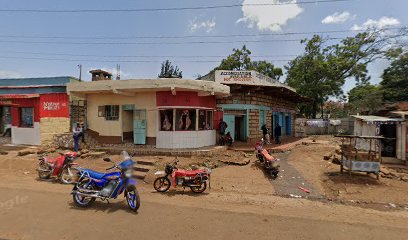
VOGUE DEPOT
Discover the lively vibe of Vogue Depot in Mutuati, where local culture meets refreshing drinks and a vibrant nightlife experience.

Destiny pub and choma zone
Discover the vibrant spirit of Kenya at Destiny Pub and Choma Zone, where delicious food and lively entertainment await.
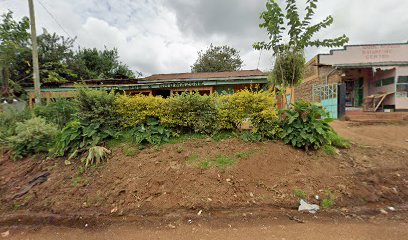
Local Phrases about Shaba National Reserve
-
- HelloJambo
[jahm-boh] - GoodbyeKwaheri
[kwah-heh-ree] - YesNdio
[nn-dee-oh] - NoHapana
[hah-pah-nah] - Please/You're welcomeTafadhali
[tah-fah-dah-lee] - Thank youAsante
[ah-sahn-teh] - Excuse me/SorrySamahani
[sah-mah-hah-nee] - How are you?U hali gani?
[oo hah-lee gah-nee] - Fine. And you?Mzuri. Na wewe?
[mzoo-ree. nah weh-weh] - Do you speak English?Unazungumza Kiingereza?
[oo-nah-zoo-ngoom-zah keen-gheh-reh-zah] - I don't understandSielewi
[see-eh-leh-wee]
- HelloJambo
-
- I'd like to see the menu, pleaseNingependa kuona menyu, tafadhali
[neen-geh-pen-dah kwoh-nah meh-nyoo, tah-fah-dah-lee] - I don't eat meatSili nyama
[see-lee nyah-mah] - Cheers!Mambo!
[mahm-boh] - I would like to pay, pleaseNingependa kulipa, tafadhali
[neen-geh-pen-dah koo-lee-pah, tah-fah-dah-lee]
- I'd like to see the menu, pleaseNingependa kuona menyu, tafadhali
-
- Help!Msaada!
[msah-ah-dah] - Go away!Nenda zako!
[nen-dah zah-koh] - Call the Police!Piga polisi!
[pee-gah poh-lee-see] - Call a doctor!Piga daktari!
[pee-gah dahk-tah-ree] - I'm lostNimepotea
[nee-meh-poh-teh-ah] - I'm illNinaumwa
[nee-nah-oom-wah]
- Help!Msaada!
-
- I'd like to buy...Ningependa kununua...
[neen-geh-pen-dah koo-noo-noo-ah] - I'm just lookingNatazama tu
[nah-tah-zah-mah too] - How much is it?Bei ni kiasi gani?
[beh-ee nee kyah-see gah-nee] - That's too expensiveHilo ni ghali sana
[hee-loh nee gah-lee sah-nah] - Can you lower the price?Unaweza kupunguza bei?
[oo-nah-weh-zah koo-poon-goo-zah beh-ee]
- I'd like to buy...Ningependa kununua...
-
- What time is it?Ni saa ngapi?
[nee sah-ah ngah-pee] - It's one o'clockSaa moja
[sah-ah moh-jah] - Half past (10)Nusu ya (kumi)
[noo-soo yah (koo-mee)] - MorningAsubuhi
[ah-soo-boo-hee] - AfternoonMchana
[m-chah-nah] - EveningJioni
[jah-oh-nee] - YesterdayJana
[jah-nah] - TodayLeo
[leh-oh] - TomorrowKesho
[keh-shoh] - 1Moja
[moh-jah] - 2Mbili
[m-bee-lee] - 3Tatu
[tah-too] - 4Nne
[nn-neh] - 5Tano
[tah-noh] - 6Sita
[see-tah] - 7Saba
[sah-bah] - 8Nane
[nah-neh] - 9Tisa
[tee-sah] - 10Kumi
[koo-mee]
- What time is it?Ni saa ngapi?
-
- Where's a/the...?Iko wapi...?
[ee-koh wah-pee] - What's the address?Anwani ni ipi?
[ahn-wah-nee nee ee-pee] - Can you show me (on the map)?Unaweza kunionyesha (kwenye ramani)?
[oo-nah-weh-zah koo-nyoh-nyeh-shah kweh-neh rah-mah-nee] - When's the next (bus)?Basi lijalo litakuwa saa ngapi?
[bah-see lee-jah-loh lee-tah-koo-wah sah-ah ngah-pee] - A ticket (to ....)Tiketi (kwenda ....)
[tee-keh-tee kwehn-dah]
- Where's a/the...?Iko wapi...?
History of Shaba National Reserve
-
Shaba National Reserve was established in 1974 as part of a larger conservation effort to protect the diverse ecosystems and wildlife in the region. Named after Mount Shaba, a volcanic mountain that dominates the landscape, the reserve covers an area of 239 square kilometers. The establishment aimed to safeguard the area's unique flora and fauna, including the endangered Grevy's zebra, reticulated giraffe, and Somali ostrich.
-
Shaba National Reserve is intimately connected with Joy Adamson, the naturalist and author of the world-famous book 'Born Free'. Adamson, along with her husband George, was instrumental in raising awareness about wildlife conservation in Kenya. The couple lived in Shaba for many years, and it was here that Joy was tragically murdered in 1980. Her legacy continues to draw visitors to the reserve, eager to see the landscapes that inspired her work.
-
During the 1960s, the Shaba National Reserve and its surrounding areas were affected by the Shifta War, a conflict between the Kenyan government and ethnic Somali insurgents seeking the secession of the Northern Frontier District. The war had significant impacts on the local communities and wildlife, as many areas were rendered unsafe due to guerilla warfare. The conflict eventually subsided, allowing the reserve to recover and resume its role in conservation.
-
Shaba National Reserve is part of the larger Samburu ecosystem, which includes Buffalo Springs and Samburu National Reserves. This triad of reserves is renowned for its rich biodiversity and unique species that are not commonly found in other parts of Kenya. The Ewaso Ng'iro River, which flows through Shaba, provides a vital water source for wildlife and contributes to the reserve's lush riparian forests. The ecological significance of Shaba makes it a critical area for scientific research and conservation efforts.
-
The Samburu people, a semi-nomadic tribe closely related to the Maasai, have lived in the region surrounding Shaba National Reserve for centuries. Their culture and traditions are deeply intertwined with the land and its wildlife. The Samburu are known for their distinctive attire, intricate beadwork, and traditional ceremonies. Visitors to Shaba often have the opportunity to learn about Samburu culture and witness their way of life, which remains largely unchanged despite modern influences.
-
Over the years, Shaba National Reserve has become a popular destination for eco-tourism, attracting visitors from around the world. The development of tourism infrastructure, such as lodges and guided tours, has provided economic benefits to local communities while promoting conservation awareness. Numerous initiatives have been launched to protect the reserve's wildlife, combat poaching, and involve local communities in conservation efforts. These initiatives are crucial for the sustainable management of Shaba's natural resources.
Shaba National Reserve Essentials
-
Shaba National Reserve is located in the eastern part of Kenya, in the Isiolo County. The nearest major city is Nairobi, which has Jomo Kenyatta International Airport (NBO). From Nairobi, you can take a domestic flight to Isiolo International Airport, which is approximately 30 kilometers from the reserve. Alternatively, you can drive from Nairobi to Shaba National Reserve, a journey that takes around 5 to 6 hours by road. The main route is via the A2 highway, which is a relatively smooth drive.
-
Within Shaba National Reserve, the primary mode of transportation is by safari vehicle. Most lodges and camps within the reserve offer game drives and guided tours. It is advisable to book these in advance. For those driving themselves, a 4x4 vehicle is essential due to the rough terrain. There are no public transportation options within the reserve, so plan accordingly with your tour operator or accommodation provider.
-
The official currency in Kenya is the Kenyan Shilling (KES). Credit cards are accepted at most lodges and camps within Shaba National Reserve, but it's always wise to carry some cash for tips and minor purchases. ATMs are available in Isiolo town, so consider withdrawing sufficient cash before entering the reserve. Note that smaller vendors and local markets may only accept cash.
-
Shaba National Reserve is generally safe for tourists, but standard precautions should be taken. Avoid walking alone at night and always follow the guidance of your tour operator or lodge staff. Petty crime such as pickpocketing can occur in crowded areas, so keep valuables secure. Be cautious in the nearby town of Isiolo, where crime rates are higher, especially at night. Always travel with a guide when exploring areas outside the main tourist routes.
-
In case of emergency, contact the nearest lodge or camp staff, who are trained to handle various situations. The emergency number in Kenya is 999 or 112 for police, fire, and medical services. Ensure you have travel insurance that covers medical emergencies. There are medical facilities in Isiolo town, but for serious conditions, evacuation to Nairobi may be necessary. Always carry a first aid kit and any personal medications you may need.
-
Fashion: Do wear lightweight, breathable clothing in neutral colors to blend in with the natural environment. Avoid bright colors that may startle wildlife. Religion: Do respect local customs and traditions, especially if visiting nearby villages. Public Transport: Do use designated safari vehicles for game drives. Don't rely on public transport within the reserve. Greetings: Do greet people with a friendly 'Jambo' (Hello). A handshake is common. Eating & Drinking: Do try local Kenyan dishes offered at lodges. Don't drink tap water; always use bottled or filtered water.
-
To experience Shaba National Reserve like a local, consider visiting during the low season (April to June) for fewer crowds and better wildlife sightings. Engage with your guides and lodge staff; they often have fascinating stories and insights about the area. Don't miss the opportunity to visit the nearby Samburu and Buffalo Springs National Reserves, which offer diverse wildlife and landscapes. Participate in cultural visits to local Samburu villages to learn about their way of life and traditions.
Nearby Cities to Shaba National Reserve
-
Things To Do in Nakuru
-
Things To Do in Nairobi
-
Things To Do in Eldoret
-
Things To Do in Kitale
-
Things To Do in Kisumu
-
Things To Do in Mbale
-
Things To Do in Moshi
-
Things To Do in Arusha
-
Things To Do in Lamu
-
Things To Do in Malindi
-
Things To Do in Jinja
-
Things To Do in Mombasa
-
Things To Do in Lira
-
Things To Do in Diani Beach
-
Things To Do in Kampala


